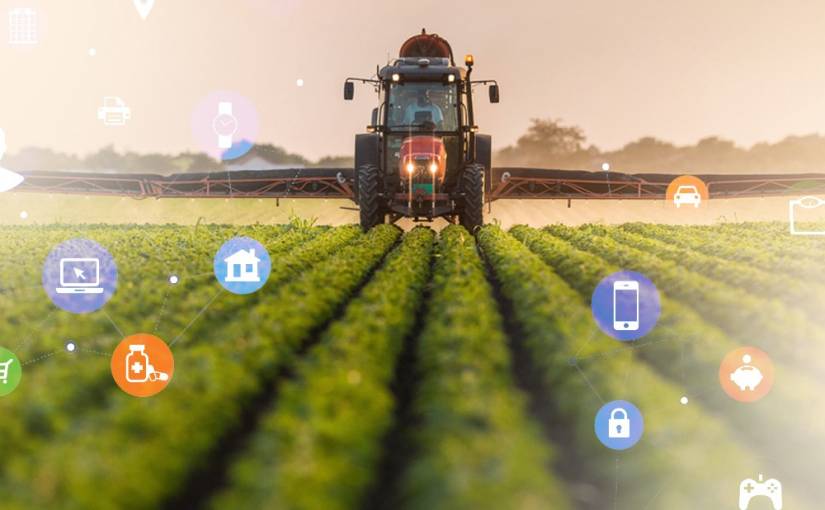In agriculture, like in other industries, the Internet of Things promises formerly unattainable efficiency, resource and expense savings, automation, and data-driven operations. However, the combination of IoT and Agriculture is really very beneficial. These advantages aren’t enhancements; they’re remedies for a whole industry grappling with a slew of serious issues.
Exceptional efficiency
Agriculture is now in a contest. Farmers must produce more with deteriorating soil, decreasing land supply, and growing weather variability.
Farmers can monitor their products and conditions in real-time thanks to IoT-enabled agriculture. As a result, they have quick insights, can identify problems before they occur, and make well-informed judgments on how to prevent them.
IoT solutions in agriculture also include automation, such as demand-based irrigation, fertilization, and robot harvesting.
Growth
70% of the world’s population will live in cities by reaching 9 billion people. IoT-based greenhouses have enabled Short food supply chains and hydroponic systems, which should be able to feed these individuals with fresh fruits and vegetables.
We should grow food in supermarkets, on the walls and rooftops of buildings, in shipping crates, and of course, in the comfort of everyone’s home, thanks to smart closed-cycle agricultural systems.
Resources are scarce
Plenty of agriculture IoT solutions are focused on maximizing the use of resources—water, electricity, land. However, highly precise farming with IoT relies on the data obtained from varied sensors in the field, which allows farmers to correctly distribute just enough nutrients within one plant.
Healthy process
IoT-enabled smart farming is a proven approach to cut pesticide and fertilizer use. Precision farming not only saves water and energy and makes farming more environmentally friendly, but it also reduces pesticide and fertilizer use dramatically.
In comparison to typical farming processes, this strategy offers a cleaner and more organic final result.
Product quality has improved
IoT farm application ecosystems are real? Agriculture that is data-driven helps grow more and better goods. Farmers may better grasp the intricate interconnections between the circumstances and the quality of their crops by using soil and crop sensors, aerial drone surveillance, and farm mapping.
They can replicate the optimal circumstances and boost the nutritional worth of the items by using linked systems.
Enhanced Adaptability
The enhanced adaptability of operations is one of the advantages of employing IoT in agriculture. Thanks to real-time monitoring and forecast systems, farmers can swiftly respond to any significant change in weather, humidity, air quality, or the health of each crop or soil in the field.
New capabilities aid agriculture specialists in the event of significant weather changes, allowing them to save the crop.
Use of smart machines in Agriculture
There are various instances of how IoT might be used in agriculture, from flexible data analytics and management systems to future robot pollinators.
We’ve highlighted numerous IoT applications in agriculture in this post, including vehicles, ag spaces, and operations, as well as a few fascinating initiatives in each area.
-
Ag vehicles
In general, the use of agricultural vehicles is at the heart of profitable agriculture. In addition, the use of smart vehicles improves efficiency and pushes automation in conventional farming.
Connected combines and tractors from Deere & Company are prime examples. These cars drew a lot of attention from CES 2019 attendees earlier this year, not just because of their massive size and eye-catching green hue, but also because of the technology behind the hood.
To allow self-driving and precision farming, Deere’s vehicles are outfitted with sensors, computer vision, highly precise (less than one inch) GPS, and machine learning. Although these machines still require an operator, because of advancements in technology, it is no longer necessary for the operator to be a highly certified ag vehicle driver.
-
Automobiles in concept
The Case IH concept vehicle, on the other hand, is entirely autonomous and may be operated by artificial intelligence or manned remotely from the office. Case IH, one of the world’s major agtech companies, has been working on the vehicle since 2016 and is scheduled to release the first prototype shortly.
-
Drone Technology
In the industry, unmanned aerial vehicles (UAVs) or simply drones have grown in popularity. In most situations, We use drones to monitor agriculture as an IoT-based monitoring system, as well as instruments for farm mapping, on-demand watering, and pesticide treatment.
The Xaircraft P30 is an autonomous plant security drone that won a Red Dot award. It employs complex algorithms to provide exceptional flying capabilities and accurate chemical spraying, saving up to 30% of pesticide material and 90% of water.
-
Smart sprinklers, coolers, heaters
This all goes with IoT sensors technology. Implementing IoT in agriculture is not only a means to increase production and lower costs, but it’s also one of the most important ways to minimize farming’s carbon footprint and conserve energy and water resources.
Automated irrigation, for example, based on the use of smart sprinklers, helps farmers cut water usage and thereby makes agriculture more sustainable.
Integrated coolers and heaters in storage and transportation facilities improve product preservation while also reducing waste. In addition, intelligent LED lighting responds to changing circumstances automatically, ensuring that every region of a greenhouse or storage room receives the proper quantity of light.
Digital Lumens makes the type of intelligent LEDs that help with energy use monitoring and shows how IoT can help with agricultural automation. In addition, this technology improves the efficiency of managing storage and transportation assets by combining remote control and data analytics features.
Image Credit: dane shevets; pexels; thank you!


















